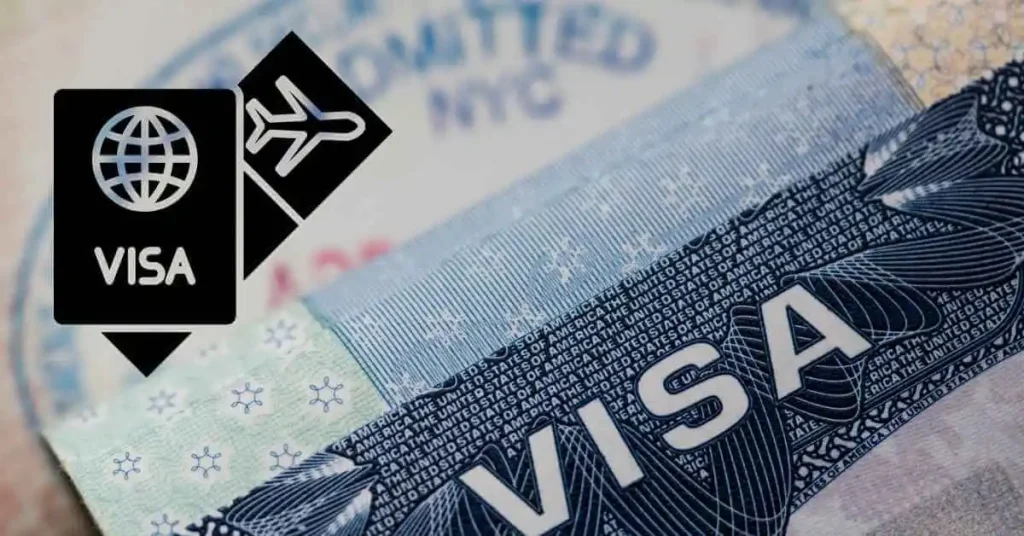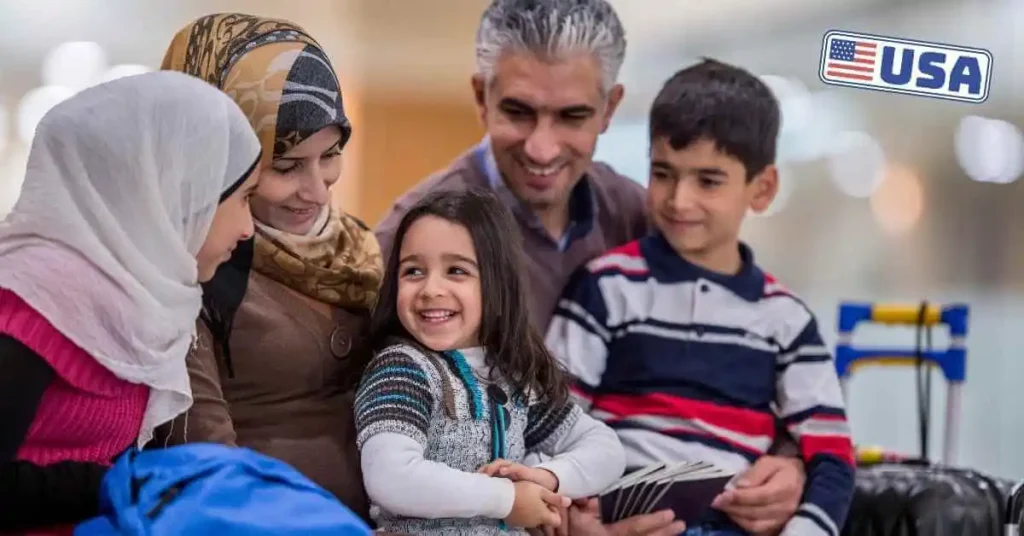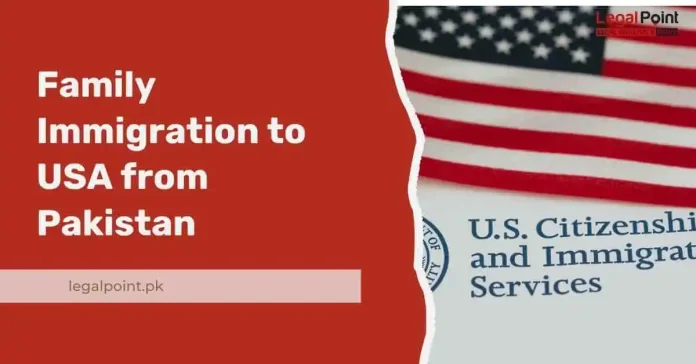1. Introduction
Moving to the USA is a dream for many families in Pakistan.
The U.S. offers various immigration pathways, allowing families to reunite and build a better future together.
Family immigration to USA from Pakistan follows a structured process, requiring applicants to meet specific eligibility criteria and legal requirements.
The process can be complex, involving visa categories, petition approvals, interviews, and documentation. Understanding these steps is essential to ensure a smooth and successful immigration journey.
This guide covers everything you need to know about family-based immigration to the USA, including visa options, processing steps, requirements, and tips to avoid common mistakes.
Table of Contents
2. Understanding Family-Based Immigration to the USA
Family-based immigration allows U.S. citizens and lawful permanent residents (Green Card holders) to sponsor eligible family members to live and work in the USA.
The U.S. Citizenship and Immigration Services (USCIS) processes these applications, and the National Visa Center (NVC) manages further steps before visa issuance.
The U.S. government prioritizes immediate relatives of citizens, while other family members fall under a preference category, leading to longer processing times.
3. Types of Family-Sponsored Visas

3.1 Immediate Relative (IR) Visas
Immediate relative visas have no annual limits and are processed faster. These include:
- IR-1: Spouse of a U.S. citizen
- IR-2: Unmarried child (under 21) of a U.S. citizen
- IR-5: Parent of a U.S. citizen (if the petitioner is 21 or older)
3.2 Family Preference (F) Visas
These visas are for more distant relatives and have annual caps, leading to longer waiting times. They include:
- F1: Unmarried sons/daughters (21+) of U.S. citizens
- F2A: Spouses and minor children of Green Card holders
- F2B: Unmarried sons/daughters (21+) of Green Card holders
- F3: Married sons/daughters of U.S. citizens
- F4: Siblings of U.S. citizens (if the petitioner is 21 or older)
Also Read: Family Immigration to UK from Pakistan
4. Family Immigration Process: Step-by-Step Guide

4.1 Filing the Petition (Form I-130)
The immigration process begins with the U.S. citizen or Green Card holder filing Form I-130, Petition for Alien Relative, with USCIS.
This form establishes the family relationship between the petitioner and the beneficiary.
Required documents include proof of relationship, birth certificates, marriage certificates, and financial statements.
4.2 Approval and National Visa Center (NVC) Processing
Once USCIS approves the petition, the case moves to the NVC, where applicants submit additional documents, including the DS-260 (Immigrant Visa Application) and Form I-864 (Affidavit of Support).
The latter ensures that the petitioner can financially support the beneficiary and prevent reliance on government aid.
4.3 Visa Interview at the U.S. Embassy in Pakistan
After completing the required paperwork, the applicant schedules an interview at the U.S. Embassy in Islamabad or the Consulate in Karachi.
They must bring original documents, passport-size photographs, and financial proofs.
The visa officer will ask questions about the relationship, background, and purpose of immigration. Providing honest and consistent answers increases the chances of approval.
4.4 Medical Examination and Biometrics
Applicants must undergo a medical examination at an approved panel physician center in Pakistan.
This includes vaccinations, general health checks, and tuberculosis screening.
Biometrics, such as fingerprints and photographs, are also collected before visa issuance.
4.5 Visa Issuance and Traveling to the USA
If the interview is successful, the applicant receives an immigrant visa in their passport.
Upon arrival in the USA, they must present the sealed immigration packet at the airport, where they are officially admitted as a permanent resident.
The Green Card is mailed to the U.S. address provided during the application.

If you need any expert help regarding visas, immigration, or any issue, call us at 03337703712 or contact us today for stress-free solutions.
5. Processing Time and Costs
Processing times vary depending on the visa category.
Immediate relatives of U.S. citizens usually experience faster processing, often within 12–24 months, while family preference visas can take several years.
Costs associated with family immigration include:
- Form I-130 filing fee: $535
- DS-260 visa application fee: $325
- Affidavit of Support (I-864) fee: $120
- Medical examination costs: Varies by location
- Green Card processing fee: $220
6. Challenges and Common Issues in Family Immigration
Many applicants face delays due to incomplete documentation, processing backlogs, or missing interviews. Some common challenges include:
Proving a genuine family relationship: Spouses and fiancés often need to submit additional proof, such as photographs and communication records.
Financial eligibility: Petitioners must meet income requirements to sponsor their family members.
Administrative processing: Some cases require additional security checks, leading to extended waiting times.
Visa rejections: Incorrect information or missing documents can result in denials. However, applicants may appeal or reapply with stronger evidence.
7. Alternative Immigration Options for Families

If family-based immigration is not an option, there are alternative pathways, including:
- K-1 Fiancé(e) Visa: Allows a U.S. citizen’s fiancé(e) to enter the USA and marry within 90 days.
- Employment-Based Sponsorship: Skilled workers can secure Green Cards through employer sponsorship.
- Asylum or Refugee Status: For individuals facing persecution in their home country.
8. Tips for a Smooth Immigration Process
To avoid unnecessary delays or rejections, applicants should:
- Double-check all documents before submission.
- Stay updated on visa processing timelines through the USCIS website.
- Maintain clear and truthful communication with immigration authorities.
- Seek legal advice from an immigration attorney if needed.
Also Read: Visa-Free Countries for Pakistan – Travel Without Visa
9. Frequently Asked Questions (FAQs)
How long does family immigration to the USA take?
Processing times depend on the visa category. Immediate relatives usually get approval within 12–24 months, while preference visas may take several years.
Can I work while waiting for my visa?
Applicants outside the USA cannot work until they receive their immigrant visa and enter the country.
However, those adjusting to their status within the USA can apply for a work permit (EAD).
What happens if my visa application is denied?
If denied, applicants can request reconsideration, appeal the decision, or reapply with stronger evidence.
It is essential to understand the reason for rejection before taking further action.
Can I sponsor my sibling if I am a Green Card holder?
No, only U.S. citizens aged 21 or older can sponsor their siblings under the F4 category. Green Card holders cannot sponsor their siblings.
What are the financial requirements for sponsorship?
Petitioners must meet minimum income requirements based on household size. The Affidavit of Support (Form I-864) ensures they can financially support the immigrant.
10. Conclusion
Family immigration to the USA from Pakistan offers a chance for loved ones to reunite and build a better future.
The process requires careful planning, patience, and complete documentation.
Understanding the different visa categories, legal requirements, and potential challenges can help applicants navigate the process smoothly.
Seeking legal advice, preparing thorough paperwork, and staying updated on immigration policies can significantly improve the chances of success.
Whether sponsoring a spouse, child, parent, or sibling, following the correct steps ensures a smooth transition to life in the USA.
If you are considering family immigration, start the process early and follow the guidelines to ensure a successful application.

If you need any expert help regarding visas, immigration, or any issue, call us at 03337703712 or contact us today for stress-free solutions.



